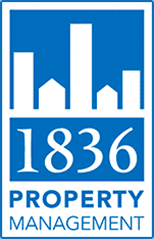In order to conduct market analysis for residential properties you should have optimal time, the required skills and, of course, effort.
You see, property investors and landlords require adequate knowledge and a 360 degree analysis of the real estate market to understand how effective their investment is and how their investment decisions could inspire a successful investment.
Skilled investors also know the importance of conducting market analysis and how to utilize their investment tools to come up with the best possible investment strategy. With all things considered, your effort is the only way standing between you and the profitability of your residential properties. Some investors are saying that the best way to deal with all this is to choose the best property manager in your state and to let them do it.
Essential Metrics for Market Analysis
Quantitative Data
These metrics are used to shortlist the best choices in the residential property market, in terms of high profitability. However, quantitative data fails to take into account the unique characteristics of investment properties such as the location, amenities, square footage, number of rooms, etc.
1. Cash Flow
Cash Flow is arguably the most straightforward metric for your residential property investment decisions. This value will refer to the ‘positive cash flow’, or perhaps even a ‘negative cash flow’ depending on your preference and expectations.
Here’s how you calculate the cash flow for your residential properties:
Cash Flow/Month = Monthly income – Monthly Mortgage Payments – Monthly Expenses
2. Cash on Cash Return
This metric helps determine the ROI (return on investment) of a residential property. In other words, it helps forecast how much time an investor may need to cover the original cost of an investment property. Studies are showing that you can increase your profits just by allowing pets in your properties.
Cash on Cash Return = NOI (Net Operating Income) / Investment Costs
Do remember that CoC only takes into account any down payment you may have made on a property and not the money borrowed for the down payment.
Qualitative Data
As is the case for every kind of research and analysis, qualitative data is crucial for residential properties as well. This form of research helps determine which properties can be compared to your preferences. You see, it is normal for property owners and landlords to compare their investments to other properties, and therefore, qualitative data allows them to find similar properties in the area.
Qualitative data typically includes:
- Condition of neighborhood and area
- Square footage/ size
- Area of land
- Number of rooms and bathrooms
- How old the property is
- Special features and amenities for e.g. terrace, balcony, garden, fireplace and swimming pool
- Recent installments and improvements
- The location of the residential property in terms of its surrounding areas for e.g. transportation choices, schools, grocery shops, roads, etc.
3. Capitalization Rate
Commonly referred to as the ‘cap rate’, this real estate investment metric allows real estate investors to calculate the ROI potential of a residential property. This value determines the quality of investment with respect to its condition and key characteristics, in order to shortlist all the bad choices.
To put it simply, the capitalization rate of a property is like a filter that removes all unnecessary candidates for your hard earned money. Next, your cash flow helps summarize which of the remaining few are worth your time and money.
Capitalization Rate = Net Operating Income (NOI) / Property Price
Final Words
Ideally, the cap rate of a property should be used when an investor is considering to invest in multiple properties. However, this metric will not be able to indicate quantitative analysis for investment properties once you’ve opted for external financing. If you’ve borrowed for your investment, a property manager with the right qualities will recommend cash flow metrics since they may be more accurate in calculating ROI.
You see, cash flow requires a lot more data to be reviewed and analyzed, for instance, mortgage payments and sundry expenses. The cap rate, on the other hand, only calculates the forecasted Net Operating Income (NOI) of a property and, of course, its price.
An easier way to take care of all of this would be to let 1836 Property Management manage everything for you. Get in touch with us today if you have any questions.







